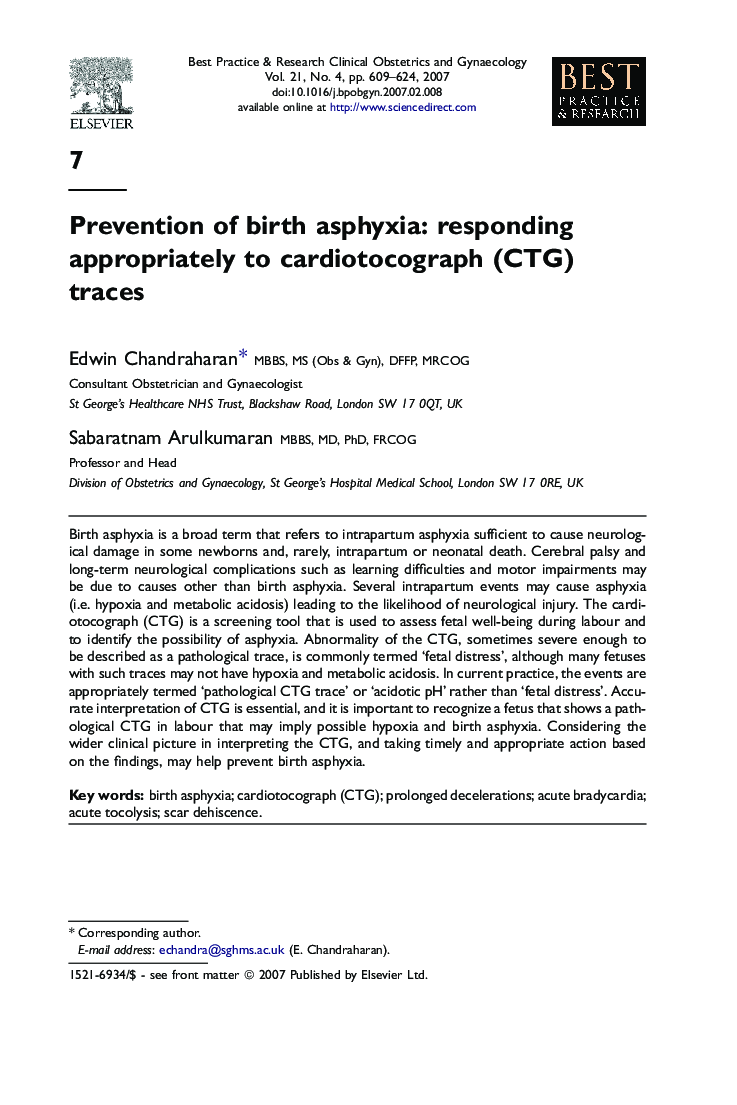| کد مقاله | کد نشریه | سال انتشار | مقاله انگلیسی | نسخه تمام متن |
|---|---|---|---|---|
| 3907660 | 1251067 | 2007 | 16 صفحه PDF | دانلود رایگان |

Birth asphyxia is a broad term that refers to intrapartum asphyxia sufficient to cause neurological damage in some newborns and, rarely, intrapartum or neonatal death. Cerebral palsy and long-term neurological complications such as learning difficulties and motor impairments may be due to causes other than birth asphyxia. Several intrapartum events may cause asphyxia (i.e. hypoxia and metabolic acidosis) leading to the likelihood of neurological injury. The cardiotocograph (CTG) is a screening tool that is used to assess fetal well-being during labour and to identify the possibility of asphyxia. Abnormality of the CTG, sometimes severe enough to be described as a pathological trace, is commonly termed ‘fetal distress’, although many fetuses with such traces may not have hypoxia and metabolic acidosis. In current practice, the events are appropriately termed ‘pathological CTG trace’ or ‘acidotic pH’ rather than ‘fetal distress’. Accurate interpretation of CTG is essential, and it is important to recognize a fetus that shows a pathological CTG in labour that may imply possible hypoxia and birth asphyxia. Considering the wider clinical picture in interpreting the CTG, and taking timely and appropriate action based on the findings, may help prevent birth asphyxia.
Journal: Best Practice & Research Clinical Obstetrics & Gynaecology - Volume 21, Issue 4, August 2007, Pages 609–624